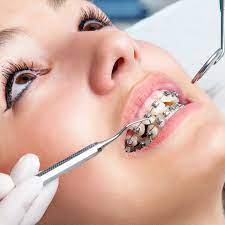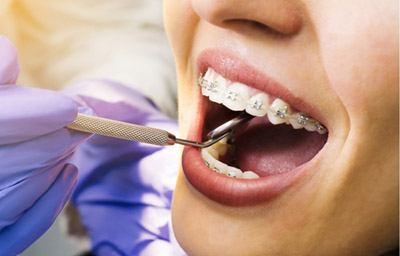Examine This Report on Causey Orthodontics
Table of ContentsHow Causey Orthodontics can Save You Time, Stress, and Money.Indicators on Causey Orthodontics You Should Know5 Easy Facts About Causey Orthodontics ShownAbout Causey OrthodonticsCausey Orthodontics Things To Know Before You Buy
Overlooking occlusal partnerships, it was common to remove teeth for a selection of dental issues, such as malalignment or congestion. The concept of an undamaged dentition was not extensively appreciated in those days, making bite correlations appear unimportant. In the late 1800s, the concept of occlusion was crucial for producing reputable prosthetic substitute teeth.As these principles of prosthetic occlusion advanced, it became a very useful tool for dental care. It remained in 1890 that the work and effect of Dr. Edwards H. Angle started to be felt, with his payment to modern orthodontics especially significant. Focused on prosthodontics, he instructed in Pennsylvania and Minnesota prior to routing his attention towards dental occlusion and the treatments required to keep it as a normal condition, hence becoming understood as the "papa of modern-day orthodontics".

The principle of excellent occlusion, as proposed by Angle and incorporated into a classification system, enabled a change towards dealing with malocclusion, which is any deviation from regular occlusion. Having a full collection of teeth on both arches was very searched for in orthodontic treatment due to the requirement for specific partnerships between them.
Not known Facts About Causey Orthodontics
As occlusion came to be the essential top priority, facial proportions and aesthetics were disregarded - orthodontist near me. To accomplish excellent occlusals without making use of outside pressures, Angle postulated that having ideal occlusion was the most effective method to gain optimum facial appearances. With the passing of time, it became rather noticeable that also an outstanding occlusion was not ideal when taken into consideration from an aesthetic perspective
Charles Tweed in America and Raymond Begg in Australia (who both examined under Angle) re-introduced dentistry extraction into orthodontics during the 1940s and 1950s so they can boost face esthetics while additionally making certain better stability worrying occlusal connections. In the postwar period, cephalometric radiography started to be utilized by orthodontists for determining modifications in tooth and jaw setting brought on by growth and treatment. It came to be obvious that orthodontic treatment might readjust mandibular growth, resulting in the development of functional jaw orthopedics in Europe and extraoral force measures in the United States. Nowadays, both practical devices and extraoral devices are used around the world with the goal of changing growth patterns and forms. Seeking true, or at the very least enhanced, jaw relationships had actually ended up being the main purpose of treatment by the mid-20th century.
5 Simple Techniques For Causey Orthodontics
 Until the mid-1970s, braces were made by covering steel around each tooth. https://www.successcenter.com/gainesville/services/causey-orthodontics-161950., it became possible to instead bond metal brackets to the teeth.
Until the mid-1970s, braces were made by covering steel around each tooth. https://www.successcenter.com/gainesville/services/causey-orthodontics-161950., it became possible to instead bond metal brackets to the teeth.Andrews gave an insightful definition of the ideal occlusion in long-term teeth. This has had meaningful effects on orthodontic treatments that are provided regularly, and these are: 1. Appropriate interarchal partnerships 2. Right crown angulation (suggestion) 3. Appropriate crown inclination (torque) 4. No rotations 5. Tight contact points 6. Flat Curve of Spee (0.02.5 mm), and based upon these concepts, he uncovered a therapy system called the straight-wire device system, or the pre-adjusted edgewise system.
The benefit of the layout exists in its brace and archwire mix, which requires only marginal cord flexing from the orthodontist or medical professional (cheapest orthodontist near me). It's aptly named after this feature: the angle of the slot and thickness of the brace base ultimately identify where each tooth is positioned with little requirement for extra manipulation
Getting My Causey Orthodontics To Work
Both of these systems used similar brackets for each tooth and demanded the bending of an archwire in three planes for situating teeth in their preferred positions, with these bends dictating best positionings. When it involves orthodontic devices, they are divided into 2 kinds: detachable and repaired. Detachable appliances can be handled and off by the person as required.

Hence, nearly all modern set devices can be taken into consideration variations on this edgewise appliance system. Early 20th-century orthodontist Edward Angle made a significant contribution to the world of dentistry. He produced four unique appliance systems that have actually been used as the basis for several orthodontic treatments today, preventing a few exemptions.
Some Known Factual Statements About Causey Orthodontics

The cable ended in a string, and to relocate it onward, an adjustable nut was utilized, which permitted a rise in area. By ligation, each private tooth was attached to this large archwire (orthodontist expert). Due to its restricted array of movement, Angle was not able to attain exact tooth placing with an E-arch
These tubes held a firm pin, which could be rearranged at each visit in order to move them in position. Dubbed the "bone-growing device", this contraption was supposed to encourage much healthier bone development because of its possibility for transferring pressure directly to the origins. However, applying it proved frustrating in truth.